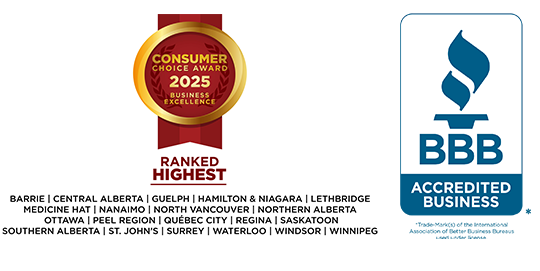Curious, then, how rarely many of us take stock of our financial health. Money plays a significant role our lives. It can cause us stress or bring us comfort. It can improve our standard of living, or severely impact our quality of life. Yet we tend to ignore our financial wellbeing until it starts causing us serious problems and getting in the way of our goals.
Your financial wellbeing is much more than whether you can afford to pay your bills each month. Just as your blood pressure can reveal a lot about your risk of disease years later, these financial benchmarks can reveal a lot about your relationship with money now and for years to come.
Your debt to income ratio (DTI) is a measure of how much you owe to various creditors compared to your before-tax earnings in any given month. Lenders will often use this measure to gauge your credit risk. You can use it to determine whether you’re overburdening yourself with debt.
To calculate your DTI, first add all your monthly debt payments and all your sources of income, as below:
What’s a reasonable debt to income ratio?
The upper limit for most lenders to issue a mortgage is 45 percent, but most prefer to see a DTI below 35 percent. The number you’re comfortable with may be even lower if your financial goals include building an emergency fund, saving for retirement, or to stop living from paycheque to paycheque.
Remember debt payments are just a small fraction of your monthly expenses. The lower your DTI, the easier it will be to create a balanced budget that fits your lifestyle.
Calculate your savings rate
Your savings rate is a measure of how much of your pre-tax monthly earnings you set aside for longer-term financial objectives. This can help predict whether you are on track for financial stability in the years ahead or risking financial difficulty and overdependence on debt.
To calculate your savings rate, first add up all the money you contribute to your various savings vehicles each month and all your sources of income, as below:
| Savings |
Amount |
Gross income |
Amount |
| Emergency fund |
$150 |
Employment income |
$5,000 |
| Retirement (RRSP) |
$200 |
Child benefit |
$790 |
| Vacation savings |
$50 |
|
|
| Total: |
$400 |
Total:
|
$5,790 |
Next, divide the amount you save by your income ($400 / $5,790) and multiply by 100. In the example above, this works out to 6.9 — which means this individual is saving slightly less than seven percent of their monthly income.
What’s a reasonable savings rate?
Most financial planners recommend you split roughly 20 percent of your gross monthly income between three distinct savings goals:
- Retirement (12.5%)
- Unexpected financial emergencies (5%)
- High value wants like a vacation, car, or mortgage down payment (2.5%)
Of course, these targets and your ability to achieve them will depend on a variety of factors including your age, budget (e.g. debt, living expenses, etc.), and how much you’ve already saved. Twenty percent is ideal, but anything is better than nothing.
Calculate your discretionary income
Your discretionary income is the amount you have left over after paying all your monthly bills and living expenses. It is money you decide how to spend. Higher discretionary income generally correlates with lower financial stress and greater subjective wellbeing.
To calculate your discretionary income, first add all your recurring monthly expenses and all your sources of income, as below:
| Bills and Living Expenses |
Amount |
Net income |
Amount |
| Mortgage payment |
$1,600 |
Employment income |
$3,800 |
| Car payment |
$650 |
Child benefit |
$790 |
| Student loan payment |
$250 |
|
|
| Credit card payment |
$85 |
|
|
| Power and gas |
$250 |
|
|
| Groceries |
$550 |
|
|
| Insurance |
$180 |
|
|
| Bank fees |
$15 |
|
|
| Property tax |
$120 |
|
|
| Cable / internet |
$95 |
|
|
| Mobile phone |
$75 |
|
|
| Total: |
$3,870 |
Total: |
$4,590 |
Next, subtract your total monthly living expenses from your monthly income ($4,590 - $3,870). In the example above this works out to $720 which the individual could spend on entertainment, household maintenance, gifts, and anything else that comes up throughout the month.
What’s a reasonable discretionary income amount?
Ideally, you want your discretionary income to be between 20 and 30 percent of your total monthly earnings. This would allow you to deservedly enjoy your hard-earned money and leave ample wiggle room to absorb any unexpected price or interest rate increases.
Unfortunately, many Canadian households are getting by with much, much less. In fact, the MNP Consumer Debt Index consistently reveals anywhere from 45 to 55 percent of Canadians have $200 or less at the end of the month after paying all their bills and living expenses. Its likely most of these households would say they life paycheque to paycheque — and it wouldn’t take much to push many of these households into an insolvency / Bankruptcy scenario.
Review your financial goals
An important benchmark of your financial health is whether your money is helping you achieve the life you want to be living. No assessment would be complete without honestly answering the following two questions:
First, do you have financial goals? Goals give you something to work toward and a benchmark to gauge your progress. People who choose between three and five short- and long-term financial goals tend to be happier and financially healthier than those who don’t.
Some ideas include:
- Paying off all credit cards and lines of credit by ( insert date here )
- Saving $XXX thousand for retirement by age 50
- Saving six months’ living expenses in an emergency fund by ( insert date here )
- Saving $X,XXX for a tropical vacation by ( insert date here )
- Saving $XX,XXX for a mortgage down payment by ( insert date here )
- Increasing disposable income to 30 percent by ( insert date here )
Are you making progress in achieving these goals? Set aside some time every month to review your short-term goals, every quarter to review your medium-term goals, and every six months to review your long-term goals. Are the steps you’re taking getting you where you want to be when you want to be there? If not, what needs to change?
Free Resources from MNP
If you feel like debt is hurting your financial wellbeing and preventing you from achieving your goals, there are several ways MNP can help you understand your challenges and find a path forward.
MNP Debt Scale
This, 15-question self assessment can help you understand the severity of your debt troubles, where you’re struggling, and whether you would benefit from professional assistance.
MNP Debt Calculator
This interactive tool helps you compare a variety of debt solutions so you can find the fastest, most affordable path to eliminate your debt for good.
MNP Budget Tracker Spreadsheet
A robust and comprehensive budget is the single most important tool to manage and improve your financial health. Use this spreadsheet to help manage your spending, measure progress toward your goals, and create a plan to get out of debt.
Free Confidential Consultation
During this free, no obligation session, you and a Licensed Insolvency Trustee will review your financial situation, discuss your challenges and goals, and identify your options for a financial fresh start. The Licensed Insolvency Trustee will explain each solution in detail and offer an unbiased recommendation of which one they think would be best for you.


